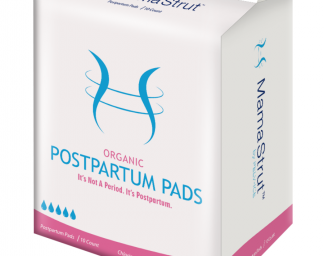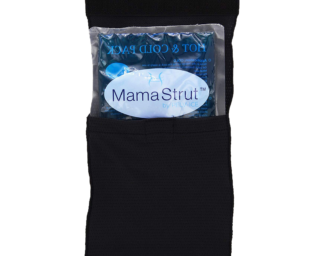Is This Normal?
Sounds scary, but yes, you should bleed after you have delivered your baby, vaginally or via c-section. The question that is on every woman’s mind is what is normal for postpartum bleeding. You haven’t had a period in almost 10 months, so dealing with the heaviest one you’ll experience when all you want to do is kick your feet up with your newborn is annoying to say the least.
Society likes to make the birth experience seem like it’s all over after your baby arrives, which is why so many women are unprepared for the postpartum phase, and all this blood can seem like something is wrong. We’ll break down what is normal, and what you can expect (3-10 weeks of bleeding and discharge!), and when to seek medical attention.
Postpartum bleeding is called lochia – it’s the process of your body getting rid of extra blood and tissue. Pregnant woman increase the volume of blood in their bodies by 50-70%, and uterus adds a lot of extra thick layers to protect the baby. When giving birth, the uterine layers and placenta shed from your body and essentially creates open tears that need to repair. So your lochia will be comprised of:
- blood
- pieces of uterine lining
- mucus
- white blood cells
But how much lochia can you expect? Let’s break it down:
1-3 Days After Delivery You’ll be expelling mostly bright red to dark red blood with a metallic smell similar to period blood. Some woman have clots that range in size from a grape to a small prune
4-7 Days After Delivery Blood will lessen and begin to turn a pinkish or brown color, and clots will gradually get smaller
8-10 Days After Delivery You can expect to see less blood and more mucus that is white or yellowish in color. This is normal as your uterus repairs itself.
3-10 Weeks After Delivery Light mucus and spotting that eventually stops.
This can seem like an awfully long time, but there are a lot of circumstances that can determine how long postpartum bleeding lasts. Such as:
- Breastfeeding: which produces the hormone oxytocin that can cause postbirth contractions to help expel excess materials in your uterus
- C-section: You can still expect some bleeding and discharge, but there will be less
- Postpartum massage: A nurse or midwife will often massage your uterus and belly after you give birth that helps the placenta and excess lining shed faster
How to Prepare
Just like a period, you might notice the flow of blood increase when you stand or get out of bed after sitting for a long time. Exercising, lifting a heavy object too soon, or straining in the bathroom can also temporarily increase the amount of blood. Listen to your doctor, and make sure you take it easy especially the first week.
To make sure you’re ready for the crimson wave, it’s important to stock up on specially designed postpartum pads. Longer and more absorbent than regular menstrual pads, postpartum pads may be available to grab from the hospital, but it’s good idea to have some packs on had at home just in case.
You won’t be able to use tampons or menstrual cups for at least 6 weeks while you heal, so make sure you’re ready!
When to be Worried
Hopefully we’ve given you enough information on what to expect, and what’s considered normal, that you won’t be too freaked out.
But here are signs that something might be wrong:
- Bleeding through a postpartum pad in an hour or less
- Blood clots the size of a golfball or larger
- Foul smelling discharge
- A fever over 100.4, especially if accompanied by chills
- A second week of bright red blood and a heavy flow
- Dizziness or feeling faint
- A tender feeling on one of both sides of your tummy
- Irregular heartbeat, or a racing heart
These signs could be signs hemorrhaging or infection, and you should call 911.
Your uterus may also be having trouble contracting back down to its regular size, meaning it’s not getting rid of the excess blood or tissue, and surgery may be recommended.
Hemorrhages affect 5% of women who give birth, and usually occurs within the first 24 hours of delivery, but it can happen up to 12 weeks postpartum, so it’s important to know the signs because they could save your life.







